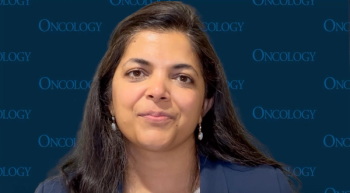
- ONCOLOGY Vol 21 No 14
- Volume 21
- Issue 14
Managing CLL: A New Level of Sophistication
For decades, initial therapy for chronic lymphocytic leukemia (CLL) consisted of alkylators such as chlorambucil (Leukeran). The introduction of nucleoside analogs such as fludarabine and monoclonal antibodies such as rituximab (Rituxan) markedly changed the initial therapy of CLL, particularly in the United States. Fludarabine and combination regimens such as fludarabine/cyclophosphamide (FC) have achieved higher complete response (CR) rates and progression-free survival (PFS) than chlorambucil in previously untreated CLL, but long-term overall survival has not improved, due to concurrent improvement in salvage therapy of relapsed CLL patients. Upfront chemoimmunotherapy regimens such as fludarabine/rituximab (FR) and fludarabine/cyclophosphamide/rituximab (FCR) have similarly improved CR rates and PFS in previously untreated CLL patients, but it is unclear whether overall survival is improved. Advances in cytogenetic analysis and other biologic prognostic factors have greatly enhanced clinicians' ability to risk-stratify newly diagnosed CLL patients, and knowledge of such prognostic factors is necessary to properly interpret results of clinical treatment studies. The choice of initial therapy for an individual patient should depend upon the patient's age and medical condition, cytogenetic and other prognostic factors, and whether the goal of therapy is maximization of CR and PFS or palliation of symptoms with minimal toxicity.
In this issue of ONCOLOGY, Dr. Thomas Lin addresses the question, what is the optimal initial treatment of chronic lymphocytic leukemia (CLL)? It is refreshing to have this question asked about a disease for which clinicians, for many years, avoided treatment at all costs, leading to the typically employed “watch and wait” strategy. The study of novel biologic prognostic factors such as the fluorescence in situ hybridization (FISH) analysis of genetics, mutation status of the immunoglobulin heavy chain variable region, CD38 expression, and ZAP-70 levels has created an understanding of the diversity of the disease. The integration of these prognostic factors and the determination of whether they lead to significantly greater prognostic information than conventional characteristics (eg, disease stage and beta2-microglobulin level) are still evolving.
Clearly, no evidence suggests which patients need to be treated earlier than what is recommended in the National Cancer Institute (NCI) Working Group guidelines. These guidelines are presently being updated and will be published shortly. For patients who require therapy using the current NCI Working Group criteria, the choices are now many and varied.
Evolving Therapeutic Strategies
Lin documents the progression from single-agent therapy intended strictly for palliation (eg, with chlorambucil [Leukeran] and cyclophosphamide) to “curative” strategies with chemoimmunotherapy, eradication of minimal residual disease, or nonablative stem cell transplants. In a stepwise fashion, investigators have confirmed that fludarabine produces superior response rates and progression-free survival rates compared to chlorambucil, and the same can be said for FC (fludarabine/cyclophosphamide) combinations compared to fludarabine alone.
However the most exciting develop has been the addition of monoclonal antibodies such as rituximab (Rituxan) to chemotherapy to establish the chemoimmunotherapy regimens. The three most commonly used regimens in the United States-FR (fludarabine/rituximab), FCR (fludarabine/cyclophosphamide/rituximab), and PCR (pentostatin/cyclophosphamide/rituximab) have led to very significant improvements in complete response (CR) rates. Thus, the CR rate using the NCI Working Group criteria has improved from approximately 5% with chlorambucil to 70% with the FCR regimen. With long-term follow-up, chemoimmunotherapy regimens are leading to long remissions. In addition, multivariate analysis of historical populations demonstrates that chemoimmunotherapy appears to be the first treatment strategy to improve the survival of CLL patients.
Significant Clinical Parameters
The advantage of randomized comparative trials is that we are beginning to understand that significant clinical parameters such as age, disease stage, and comorbidities influence the likelihood of outcome. Comparisons of chlorambucil to other chemotherapy regimens and the monoclonal antibody alemtuzumab (Campath) have demonstrated that chlorambucil is only a modestly effective agent, and many other treatments have significantly improved response rates with good safety profiles.
One of the major evolving differences in treatment allocation is exemplified by German studies in which patients less than 65 years old are treated with one regimen, older patients receive another, and those with comorbidities receive yet another. Randomized studies are also in place to see if early intervention in high-risk patient populations will lead to improved survival using new prognostic factors such as FISH genetics and mutation status.
Other Treatment Options
The surge in nonablative stem cell transplantation has been made possible by combinations of fludarabine with alkylating agents or radiation. The major improvement in outcome of allogeneic stem cell transplant is clearly due to the graft-vs-leukemia effect. It appears that approximately 40% to 60% of patients on studies with various ablative regimens have the prospect of long-term control. This graft-vs-leukemia effect can be exploited in nonablative stem cell transplants with similar projected long-term survival rates compared to ablative transplants.
The use of alemtuzumab to eradicate minimal residual disease, taking patients from partial responses to true complete molecular remissions, is another important element of the therapeutic armamentarium. Clinical trials incorporating all of these strategies, which by themselves are able to achieve molecular responses, is an important element of research for the next decade. With the potency of these new regimens, modifying complications such as infection, autoimmune complications, and the development of Richter's transformation and second malignancies must all be weighed when treatment decisions are made.
Tailoring Therapy
Finally, in managing CLL we are approaching the level of sophistication that has been gradually applied to the acute leukemias, with risk stratification, modification of long-term side effects, and demonstration of improved survival with modern treatments. The goal of treatment for the clinician must match the goal of treatment for the patient. Some patients may wish to stay alive and in good health for the next major family event, whereas younger patients with growing families more likely have the goal of long-term control and potential cure of the disease. It is important for both clinicians and patients to understand the current state of CLL therapy, so that we will be able to selectively apply the best strategy for each person we see in our clinics.
-Michael J. Keating, MB, BS
Articles in this issue
about 18 years ago
Cetuximab Improves Survival in Advanced Colorectal Cancerabout 18 years ago
Treating Bladder Cancer: Neoadjuvant vs Adjuvant Therapyabout 18 years ago
Key Issues in Treating Frail Elderly Breast Cancer Patientsabout 18 years ago
Introductionabout 18 years ago
Clinical Malignant Hematologyabout 18 years ago
Erlotinib in Pancreatic Cancer: A Major Breakthrough?Newsletter
Stay up to date on recent advances in the multidisciplinary approach to cancer.

















































































